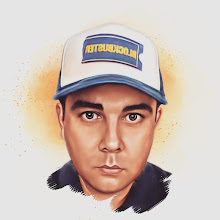 "The Ghost Breakers" *** (out of ****)
"The Ghost Breakers" *** (out of ****)Over the years, for Halloween, I will sometimes take a break from the scary horror films and review a sub-genre of comedy, comedy/horror movies.
If you are not familiar with this sub-genre, you will find several of the great comics often made comedies which poked fun at the horror genre. The best known comedians to engage in this sub-genre would arguably have to be Abbott & Costello, who appeared in such titles as "Hold That Ghost" (1941, I have reviewed it) and "Abbott & Costello Meet Frankenstein" (1948, I have reviewed it). Besides those two movies the comedy team "met" the Invisible Man, The Mummy, the Killer, Boris Karloff, and Dr. Jekyll & Mr. Hyde.
Others who have ventured into this genre are the comedy team Wheeler & Woolsey, who appeared in "Mummy's Boys" (1936), a comedy so bad, it's scary and the equally frightfully unfunny "The Ghost Catchers" (1944) starring the team Olsen & Johnson. And that leads us to "The Ghost Breakers" (1940) starring Bob Hope.
"The Ghost Breakers" was an attempt to cash in on a prior Bob Hope comedy, "The Cat and the Canary" (1939) released one year earlier, co-starring Paulette Goddard, who also co-stars in "The Ghost Breakers" as well.
Hope plays Larry Lawrence (his parents had no imagination he quips) a radio announcer known for his contacts with the underworld, where he reveals all the going ons of various criminals.
On his final broadcast, before taking a vacation, Lawrence may have taken things one step too far as now one of the gangsters Lawrence gossiped about wants to have a word with him. Through a misunderstanding, Lawrence thinks he accidentally kills a man when visiting the gangster at his hotel.
In order to hide from the police, Lawrence sneaks into the room of Mary Carter (Goddard) a woman about to inherit an old Cuban family castle. It is said the castle is haunted by ghost and zombies. But are these stories just an attempt to scare Mary away from the family's island and the castle? Or could the local legend be true? Parada (Paul Lukas, the famous Hungarian actor who won an Academy Award for his role in the movie "Watch on the Rhine" (1943) playing a Nazi) tries his hardest to convince Mary the stories are true and it would be in her best interest to sell the castle.
Hope gets mixed up in all of this by hiding in Mary's suitcase trunk and finds himself on his way to Cuba, fearful the man he thinks he killed may have been a gangster. Finding Mary quite attractive Lawrence and his valet, Alex (Willie Best) agree to help Mary discover if the ghost legend is true.
What makes "The Ghost Breakers" such an entertaining movie is the blend of comedy and horror. Much like "Abbott & Costello Meet Frankenstein" the movie is half horror half comedy. The horror part dealing with the haunted house could have worked on its own and been produced by Val Lewton. The movie lets the scary stuff with the ghost play out and then tells us a joke. The ghost are the set-up to Bob Hope's punchline, but Hope only delivers the punchline once the scary scene has been played out. In other words, the comedy doesn't interfere with the horror.
This gives the movie a lot of atmosphere and helps set a proper pace and tone. Nothing feels rushed. You don't feel the horror cheats us out of a good comedy or the comedy cheats us out of a good horror movie. It is extremely difficult to find the perfect blend for these two genres. Some more modern attempts like the "Scary Move" franchise never let up that it is all a joke. "The Ghost Breakers" is a nice contrast.
While the best thing about the movie may be Bob Hope, Paulette Goddard is equally watchable. I've always been a fan of hers. She has a lot of chemistry with Hope here, perhaps because of their work on "Canary" or maybe best she was such a natural talent. No one is going to find her funnier than Hope, but, she carries her own nicely and has a very good screen presence. Of course, being married to the greatest comedy filmmaker of all time, Charlie Chaplin, no doubt she learned a thing or two about comedy. By the time this movie was released she had already appeared in "Modern Times" (1936, I have reviewed it) with Chaplin.
At this point in his career Hope was just starting to break out. He had only done one "road" picture, "Road to Singapore" (1940) and had yet to appear in some of his best comedies (in my opinion) such as "Louisiana Purchase" (1941, I have reviewed it), "The Princess & the Pirate" (1944), "The Lemon Drop Kid" (1951), "Alias Jesse James" (1959) and my personal favorite, "Casanova's Big Night" (1954).
The movie was directed by George Marshall. Marshall has quite the versatile track record. Prior to working with Hope, he directed Laurel & Hardy in their feature film, "Pack Up Your Trouble" (1932) and some of their two-reelers; "Towed in a Hole" (1932) and "Their First Mistake" (1932). He also directed the W.C. Fields comedy, "You Can't Cheat An Honest Man" (1939). With Bob Hope he directed "Monsieur Beaucaire" (1946, I have reviewed it) another candidate for one of Hope's funniest pictures, as well as "Fancy Pants" (1950) with Lucille Ball and a remake of "The Ghost Breakers", the Dean Martin / Jerry Lewis comedy "Scared Stiff" (1953).
"The Ghost Breakers" probably won't scare today's modern audience but the movie is highly enjoyable and good fun. It is a wonderful blend of comedy and scares showing us there is nothing to be afraid of, even though sometimes we can't help ourselves.














